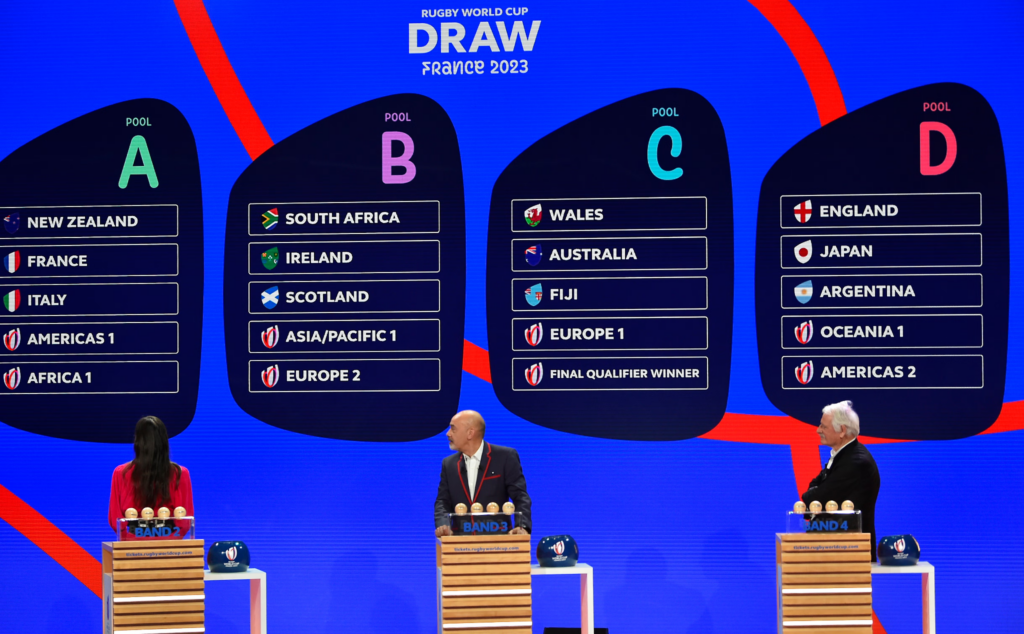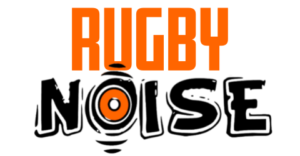With the 2023 Rugby World Cup coming up later this year, there have already been questions about the format of the competition. So how does the draw work for rugby’s biggest competition, let’s take a look.
How does the rugby world cup draw work? The teams that have qualified for the tournament are put into bands of four, based on their World Rugby rankings at the time of the draw. They are then randomly selected into pool groups, with one team from each band being put into each group.

The Rugby World Cup draw can be a little bit confusing, particularly if you are not familiar with how most major international competitions are drawn. The very first thing that World Rugby do before they are about to make the draw for the World Cup is look at the World Rugby rankings of each international team.
The teams are then put into bands, with the teams ranked 1-4 being put in band 1, teams ranked 5-8 in band 2 and teams in 9-12 ranked in band 3. Band 4 is made up of the best remaining team from Oceania, Europe, Americas and Asia/ Pacific. Band 5 is made up of the best team from Africa, the second-best teams remaining from Europe and the Americas, as well as the Final Qualifier Winner.
This gives us the 20 teams that will be in the draw for the Rugby World Cup. Once the teams have been put into their bands, they will then be placed into a group, with one team per band being put into each of the four groups. This is how you end up with four groups of five teams for the Rugby World Cup.
There is no need to draw the individual games because the group stage is round robin, meaning every team plays every team. There is also no need to draw home or away games because the World Cup is hosted in one single country. So, all of the games are played in a neutral venue, except for any game involving the home nation. The teams are drawn randomly into each group, and this is then set for the Rugby World Cup.
When is the Rugby World Cup Draw?
One of the stranger things about the Rugby World Cup draw is the timing. For the 2023 Rugby World Cup, the draw for the groups happened at the end of 2020. This is not unusual, as teams need to know who they are playing long before the tournament.
But the thing that makes this system odd is that the draw is based on the world rankings at the time. So, the draw for the 2023 Rugby World Cup happens almost three years prior to the competition. The World Rugby rankings will change a lot between the draw and the start of the competition.
You can see the issue with the draw when you look at the groups for the Rugby World Cup. At the time of the draw, Ireland and France were both outside of the top 4 of the World Rugby rankings. Now, those two teams are seen as the two best in the world. On the other hand, Wales and England are now far outside of the top four teams in the world.
But when the draw took place, England and Wales were third and fourth in the world respectively. So, the draw has meant that there is one very strong side of the competition, due to when the draw was made.
Why is the Rugby World Cup draw made so early?
The timing of the Rugby World Cup draw is quite odd because the draw happened three years before the Rugby World Cup, even before the regional qualifying had finished . So why did this draw happen so early before the tournament?
World Rugby have explained why the draw happened so early. World Rugby have said that the draw happened so early because they needed time to map out venues and employ a ticketing strategy.
The commercial side of the Rugby World Cup is crucial, and the organising committee need time to sort out where each game is going to be played, as well as sorting out tickets for each of the countries involved. This takes a lot of planning, and it is why the draw happened so early.
Rugby World Cup 2023 quarter-final draw
While the Rugby World Cup draw is primarily looking at who is going to be in every group, it also covers who will play who in the quarter-finals. The first Quarter-Final will feature the Winner of Pool C up against the Runner-up of Pool D. This is likely to be Australia or Fiji against Japan, Argentina or England.
The second quarter-final is the Winner of Pool B against the Runner-up of Pool A. This is likely to be Ireland or South Africa against New Zealand or France. There is a chance that Scotland or Italy could be involved in the quarter-final if they get out of their difficult groups.
The third quarter-final will be between the winner of Pool D and the Runner-up of Pool C. This is likely to be England or Argentina against Australia, Fiji or Wales. The final quarter-final will be between the winner of Pool A and the Runner-up of Pool B. This is likely to be between France or New Zealand and South Africa or Ireland.
What happens if there is a draw in the Rugby World Cup?
There is a huge amount of planning that goes into the Rugby World Cup. One of those is around what happens if there is a draw in one of the Rugby World Cup games.
If there is no winner after 80 minutes of a Rugby World Cup game, then it goes to extra time. Extra time is two halves of 10 minutes, with the winner being the team who finish on more points after 100 minutes of rugby. The referee will have a coin flip to decide who starts each half of extra time.
If there is no winner after two halves of extra time, it leads to sudden death. During this time, it is simply the first team to score a point that wins the game. This is similar to the now abandoned golden goal rule in football.
